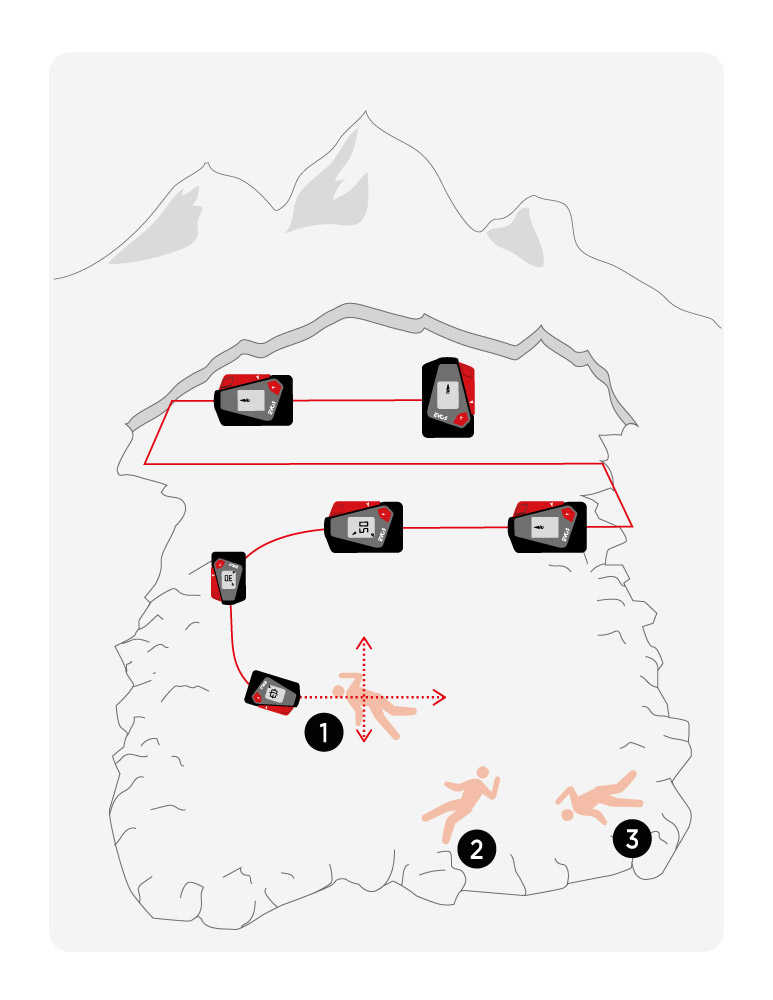THE RESCUE: CONDUCTING THE SEARCH
THE SEARCH CONSISTS OF THREE SPECIFIC PHASES. THE GROUP LEADER IS IN CHARGE OF COORDINATING THE SEARCH. BEFORE STARTING, MAKE SURE THAT YOU SWITCH ALL TRANSCEIVERS INTO SEARCH MODE AND THAT RESCUE SERVICES HAVE BEEN ALERTED.

The goal of this first phase is for your transceiver to capture a signal. Your first reflex should be to identify and mark the known location(s) where the victim(s) disappeared, and to search for visual clues on the surface (such as gloves, beanies, poles, a backpack, etc.). This phase of the search needs be conducted quickly. The area should be scanned by the transceiver’s search strip width. You have the option of holding the transceiver to your ear to listen to the device’s audio signal in order to focus at first on looking for visual clues and moving through the avalanche debris.
Once you find the signal, follow the indications that your transceiver provides. Follow the direction arrows while making sure that the distance displayed continues to decrease. Reduce search speed when the screen displays a 10 (10 meters from the victim). If the terrain allows it, keep your skis on until the screen displays a 3.0 (3 meters from the victim).


Once your transceiver screen displays a 3.0, the direction arrows disappear. With your transceiver held at snow level, you need to mark the spot where the screen displays the lowest distance. To do this, make a cross pattern with your device. Search slowly. Movement range should be no more than two meters.
Using your transceiver you successfully found the area where the victim is buried. You now need to pinpoint their location using your probe. Probe in a rectangular spiral every 25 cm. Wear gloves and use both hands to probe, positioning your probe perpendicular to the slope. Training on a regular basis helps to eliminate any doubts as to what your probe is hitting (snow, grass, ice, rock, a body).


Once you have located the victim through probing, you now need to dig them out. Leave the probe in place. Do not dig straight down to the victim. Start digging 1.5 times below the depth indicated on the probe. Start by digging wide to remove large blocks of snow: dig in a V formation. If several people are digging out the victim, rotate every 30 seconds to 1 minute to keep everyone from getting too tired. One person digs with the others clear the debris.
When multiple victims are buried, modern transceivers focus on the strongest signal, which means the closest victim. Locate, dig out, and make sure that the first victim is capable of breathing on their own before moving on to the next burial. Once you have dug out and marked the first victim, your device will then focus on the nearest victim.
If several people are conducting the search, each person should focus on one victim for greater efficiency. This way, when the first person locates the first victim, the second person can focus on the next burial.
